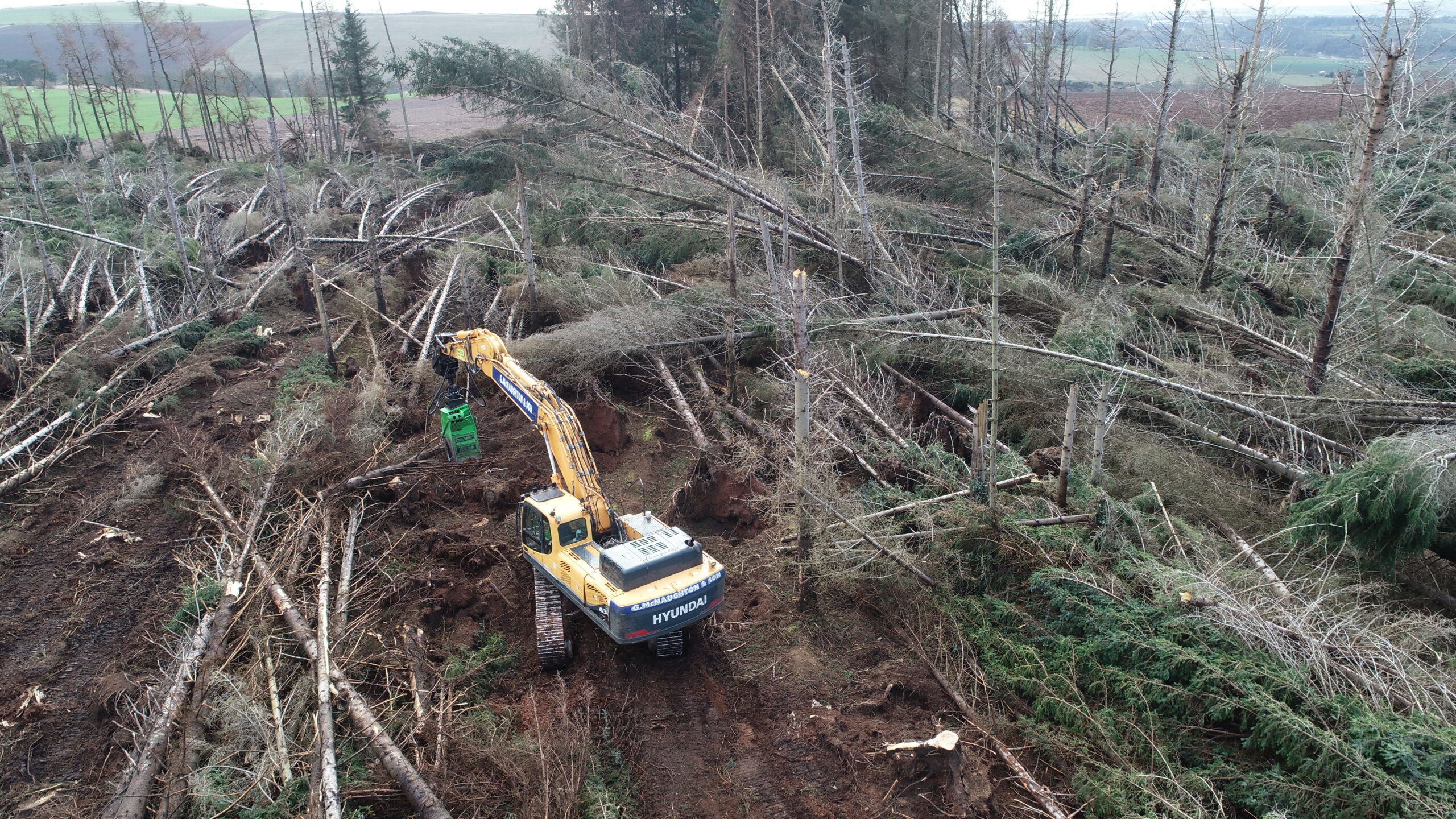As our forests mature and trees increase in height and girth, they become susceptible to damage from extreme windstorms.
Storm Arwen arrived on the 25th of November in 2021 and caused devastation throughout the UK, Ireland and France as strong winds and snow battered the country. It was unusual as winds arrived from the north-east instead of the predominant south-westerly winds, we normally experience in the UK. Gusts of up to 100mph – Settle in North Yorkshire recorded the highest gust in the UK of 110mph – were responsible for the deaths of three people by falling trees, collapsing buildings, overturning lorries and left over 225,000 UK homes without power. Waves over 10m high were responsible for the extensive damage to towns and villages along the eastern coast of Scotland and many roads were closed with vehicles stranded due to fallen trees, heavy snow and freezing conditions.
Once the weather settles the damage can be assessed and the clear up work can be begin. The forest industry is one of the worst hit when severe windstorms land and Storm Arwen was no exception. Scotland lost 8,000 hectares of commercial forests, around 16 million trees and England lost 3,300 hectares, the northeast taking the brunt of the damage. The damage is relatively short-term as once the forests are cleared, they are re-stocked, so the area of forestry in the UK does not actually decrease.
I have worked on many clearfells where you leave a perfectly good standing crop at night, only to return the next morning after a storm, to utter devastation as thousands of trees are uprooted or snapped off partway up the stem. In my early years in forestry, it was a nightmare working in windblow, having to butt trees off with a chainsaw and drag them out with a skidder winch to try and clear areas. I can’t begin to tell you the number of close calls I’ve had (and I still have the scars to prove it) trying to figure out which way trees will spring when butting them off while under compression from other blown trees laying across them. No wonder we called them Widow Makers.
Root plates were a serious problem and although I had done my windblow course where you secure the root plate with a Tirfor hand winch so it can’t fall on you, in reality this wasn’t practical. It was very time consuming and as everyone was working on piece work and not by the hour, corners were often cut to make a living wage. Cutting corners is a discussion for another day! Felling rates back then were basically piss poor and chainsaw operators were at the bottom of the food chain. Taking short-cuts and calculated risks was the only way to make a living wage.
-
That’s a remarkable amount of work hours for a single machine, the Norcar 600 owned by Erkki Rinne is taken well care of, it even has the original Diesel engine.
-
Kieran Anders is a forestry contractor working in the lake district. His work involves hand cutting and extracting timber using a skidder and tractor-trailer forwarder.
-
It is not possible to eliminate chain shot, but there are simple steps that can be taken to reduce the risk.
-
Arwel takes great pride in the fact that the mill has no waste whatsoever, “the peelings are used for children’s playgrounds, gardens and for farm animals in barns in the winter and the sawdust has multiple uses in gardens and farms as well.
-
Timber hauliers need to encourage young blood in, and also look after the hauliers we have, we need make the sector a safe and positive place to work.
FIND US ON
Related Posts
Mechanised forestry has made dealing with windblown trees a much safer prospect. Operators carry out the work from the safety of a ROPS and FOPS cabin and drag out the trees using the harvester crane. This is a giant leap forward in dealing with large areas of windblow. Excavator-based harvesters are better equipped to deal with windblow especially when trees are all tangled up together as they are able to lift the root plates out of way of the main extraction routes. Excavators benefit frommore stability
due to heavier undercarriage and tracks, more powerful slewing gear and much stronger booms.
Even using mechanisation on windblown trees has its pitfalls, the uprooted tree stumps tend to have a lot more stones embedded in the base, so keeping the harvesters cutting chains sharp is a problem. Guide bars are more prone for being damaged due to trees being under compression and the harvesting head is vulnerable as it is difficult to assess which way trees buttresses will spring once cut while under pressure.
A harvester operator needs to be extra vigilant while working in windblow which is more tiring than harvesting standing trees. Pulling out tangled trees, changing saw chains more frequently and clearing an extraction route results in lower timber production, operator fatigue and increased fuel consumption.
Harold Taylor Timber
Harold Taylor Timber is based in Insch Aberdeenshire. The company harvests and hauls a lot of timber
from along the northeast coast of Perthshire and Aberdeenshire. A considerable amount of Harold’s work over the past two years has been clearing up the aftermath of Storm Arwen and a good proportion of the trees have been large pine and spruce trees in excess of 1m³.
Harold has a large LH855C Tigercat tracked harvester with a LogMax 10,000 head and experienced operator Bobby Melvin at the controls. The harvester is easily capable in this sized timber but the ground on many of the recent sites has been gritty. This has been playing havoc with production by repeatedly dulling the cutting chain. Bobby carries spare chains as its much quicker to change them over rather than try and sharpen them on the bar, but he still has to stop the harvester to swap them over.
Harold could see the dip in production and the increase in downtime when working in wind blow and pondered over alternatives that would increase productivity. After a good deal of thought, he decided that a large powerful excavator with a tree shear could be the answer. Once butted off by the shear the harvester could process the tree without worrying about blunting chains. It would also speed up production as the tree shear excavator would not just cut them off but would lay the trees out in an orderly manner and direction that would boost the harvester’s production.
Harold approached RJ Hall Engineering at Innerleithen and together they decided on using a used Hyundai 430LC with a new OMEF B1600 tree shear.
The OMEF shear is designed for excavators in the 30-50 tonne class and requires a hydraulic flow of 250 to 300 l/min. The strongly built shear weighs 2400kg. It has a maximum shearing diameter of 700mm with a massive hydraulic cylinder that offers 140 tonne of shearing force. The Hyundai 430LC is a 44-tonne excavator and has an oil flow of 330 l/min. The Hyundai ticks all the boxes, there is plenty of power from the six-cylinder Cummings 280hp engine and it is a large robust excavator that would stand up to working in demanding forestry conditions.
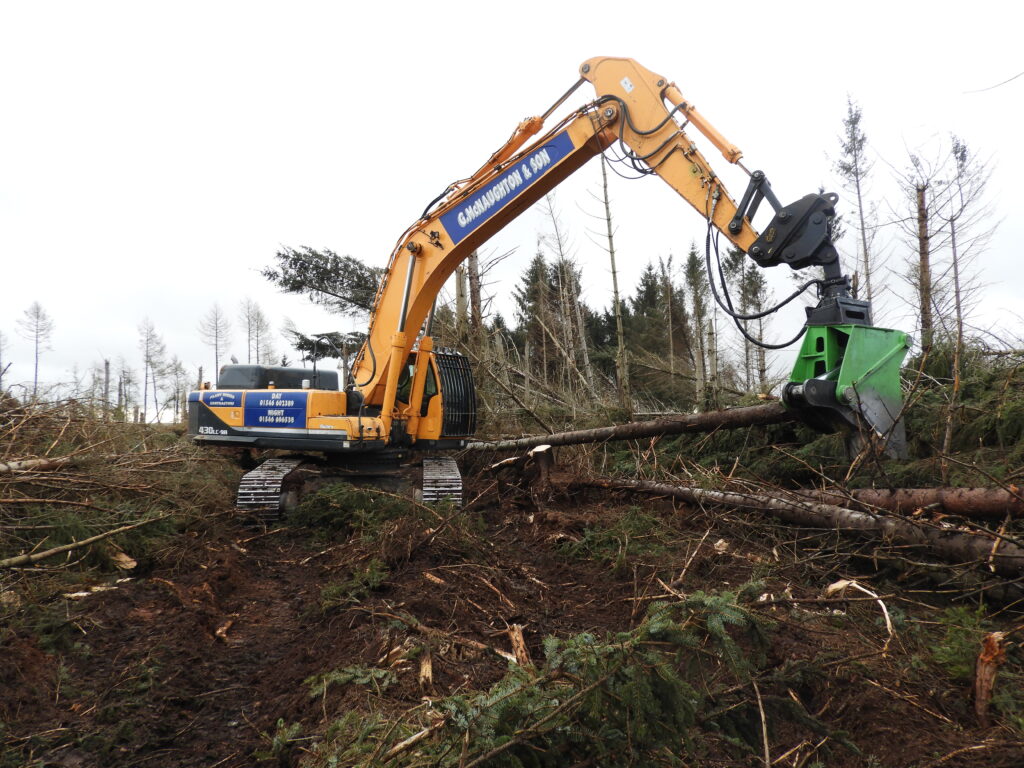

There was little needing done to the excavator for the conversion. Window protection was added for operator protection and a switch over valve installed for oil flow to the rotator. A heavy duty XR rotator from Indexator was the final piece required and the excavator shear was ready to go. When I visited Harold in Aberdeenshire the excavator had not long been moved to a new site and the operator was on a day off, so Harold offered to demonstrate it for me. This forest had been a mature stand of spruce trees that had been devastated by Storm Arwen, the whole area was flat with only the odd tree left standing.
Although Harold hadn’t much experience of using the shear it was easy to see that this is the way forward as a safe and efficient way of clearing windblown trees. The shear cut through the tree butts like a knife through butter and had the crane power to drag each tree out of a tangled mess effortlessly. It was surprising just how quick it was at clearing an area. The harvester and forwarder’s main extraction route was clear of stumps as the shear had the power to lift and move them out of the way.
This tree shear will only deal with windblow as it doesn’t have a tilt ram to work in an upright position for felling standing timber. This is not an issue for Harold as it was purchased to increase productivity while working in windblow. It is easy to remove the shear and fit other attachments so the excavator can still be used for other tasks when there is no windblow to clear up. Harold wishes that he had thought of doing this years ago as he is delighted with the boosted production figures.
After watching for a while and being in awe of the area it cleared in a short time, we set of to the previous site it had been working on. This site was another victim of Storm Arwen and Bobby was on the final furlong with the finishing line in sight. The forest road ran through the middle of the job and Harold pointed out that the right-hand side had been mostly done with the harvester prior to the Shear arriving with the left-hand side all done with the shear and harvester.
The difference was considerable, the shear and harvester had left an incredibly tidy harvesting site with almost no evidence that it had been a windblown area. Most of the uprooted stumps were back in the ground as the shear was able to cut the butts off close to the root plate without worrying about stones dulling chains. Looking at the butts I was surprised at how clean a cut the shear makes, I thought there would have been damage to the wood fibres from crushing, but I couldn’t see any. This system is still in its early days but so far is highly successful. The extra production is more than justifying the excavator and operator costs and has reduced the harvester’s running costs.
Bobby stated that this has certainly made his job easier, production on this side of the job was up by 100m³ per day compared to the other side (both were the same sized crop with similar wind damage) and more volume of the timber was salvaged due to butting off closer to the root plate.


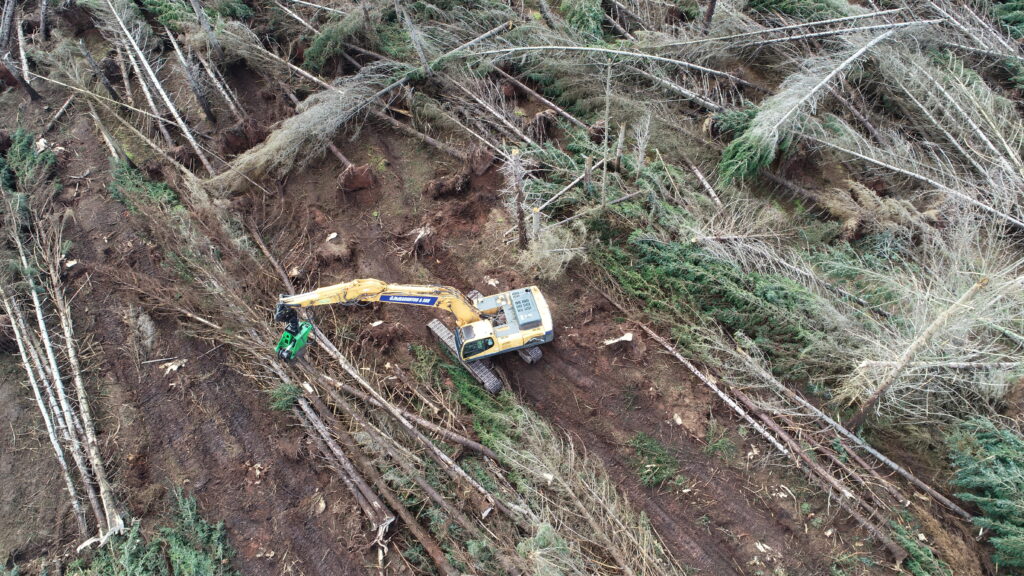

I will publish an update on this system in a few months.
Harold Taylor: 07778 357088
Forest Machine Magazine is written and edited by a forest professional with over 40 years hands on experience. We are dedicated to keeping you informed with all the latest news, views and reviews from our industry.
To support us you can subscribe to our bi-monthly magazine which is delivered to your door from only £15 per year.
Subscribe here
#homeoflogging #writtenbyloggersforloggers #loggingallovertheworld
-

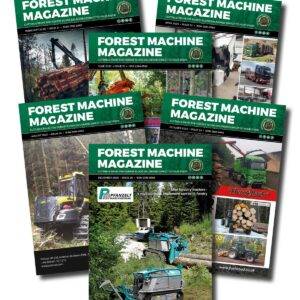 1 Year Subscription£0.00
1 Year Subscription£0.00 -

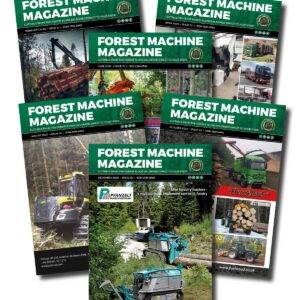 2 Year Subscription£0.00
2 Year Subscription£0.00 -

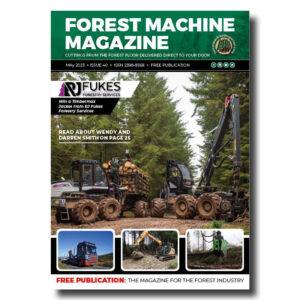 Issue 40£0.00
Issue 40£0.00 -

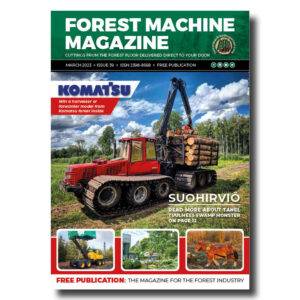 Issue 39£0.00
Issue 39£0.00 -

 Sustainable Logging: Powering The Planet T-Shirt£17.50 – £20.00
Sustainable Logging: Powering The Planet T-Shirt£17.50 – £20.00 -

 Sustainable Logging: Powering The Planet Hoodie£33.00 – £36.00
Sustainable Logging: Powering The Planet Hoodie£33.00 – £36.00

